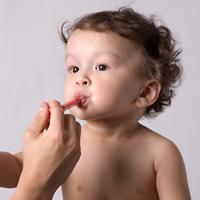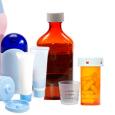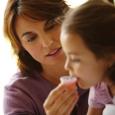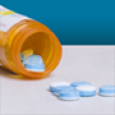Safe Dosing: A Spoonful of Safety Helps the Medicine Go Down

It’s been a long time since my mother has given me medicine. After all, it’s been more than a decade since I last lived at home – and even before I left the nest, as a young adult I’d figured out how to put on my big girl pants and take my cough medicine all by myself.
But I still remember grudgingly sipping gooey red cough syrup out of a big silver tablespoon held steady by my mother, who was determined to get every drop into my mouth. If that scene sounds familiar, just look to some our favorite kids’ movies: from Peter Pan to Mary Poppins to Nanny McPhee, we see children reluctantly swallowing their castor oil, cod liver oil, cough syrup, you name it – all from a spoon you’d find in any silverware drawer.
Unfortunately, these familiar scenes don’t paint a pretty picture when it comes to medication safety for your family. We talk a lot about safe storage and the importance of keeping medicine up and away, out of reach of children. And that’s important: In 67 percent of emergency room visits for medicine poisoning, the medicine was left within reach of a child, such as in a purse, on a counter or dresser or on the ground.
What is equally important, though, is safe dosing. Today, most liquid medicine comes with a dosing device – a small plastic cup, spoon or syringe – to ensure that you administer just the right amount of medicine to your child every time.
And to reduce the chance that your child will get into liquid medicine if they get their hands on it when you’re not looking, a flow restrictor is a helpful device. Flow restrictors can be added to the top of liquid medicine bottles to limit the flow of medicine, even if the bottle is shaken, squeezed or turned upside down. Bottles with flow restrictors attached help to ensure proper dosing, as liquid can only be drawn from the bottle using a corresponding dosing device. Kudos to Walmart and other pharmacies that are now distributing flow restrictors with all prescription children’s liquid medicine, along with safety messaging to remind parents about safe medicine storage – up, away and out of sight.
Our Advice: Use the dosing device that comes with the medicine, every time
Liquid medicines can be tricky but proper dosing is important, particularly for young children. Nothing against Nana, Mary Poppins or Nanny McPhee (or my mother, for that matter!), but kitchen spoons aren't all the same, and a teaspoon or tablespoon used for cooking won't measure the same amount as the dosing device. So the next time your little one is sick, use the dosing device that comes with the medicine to prevent dosing errors.
To learn more about medication safety, check out our full list of tips or watch this video:




